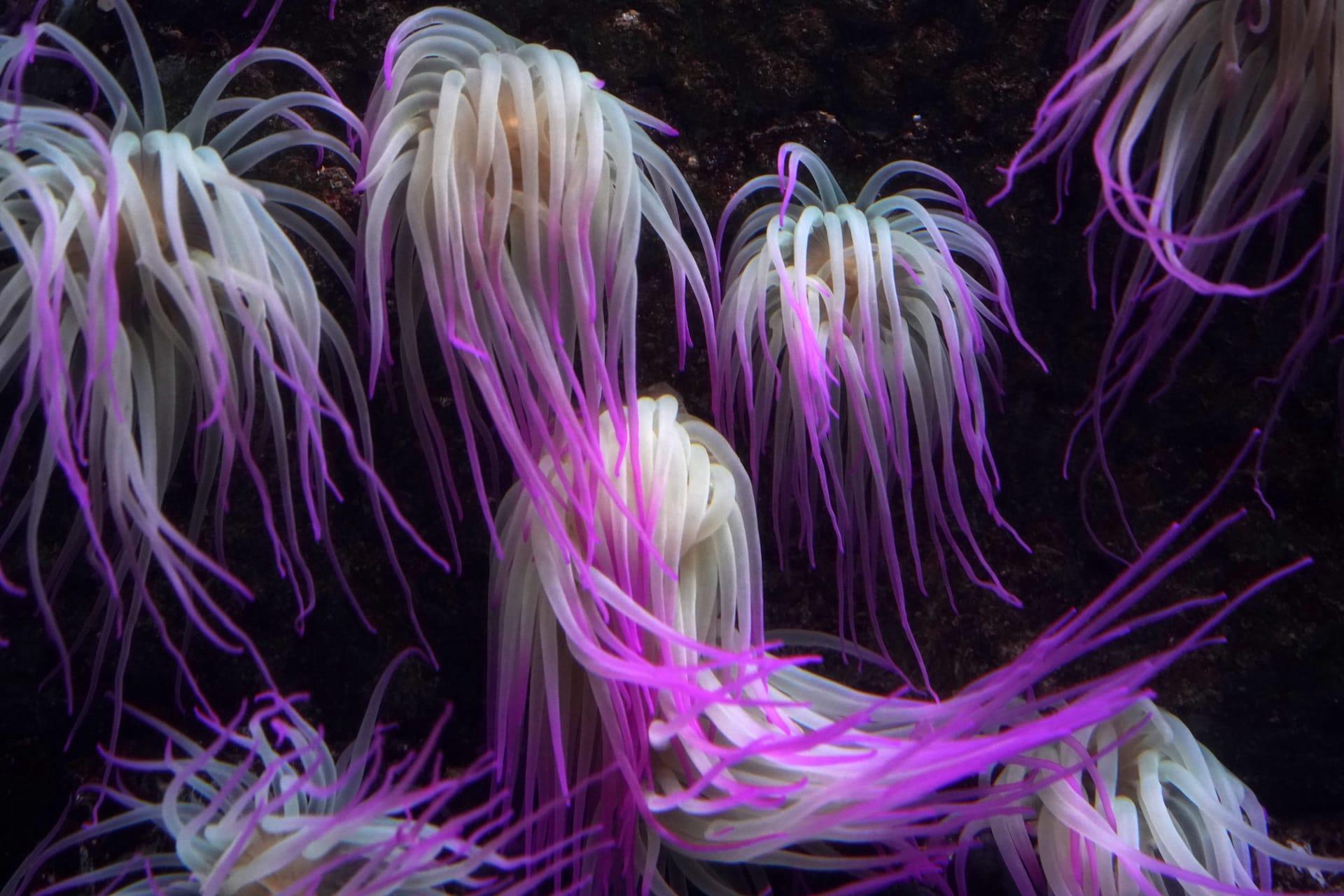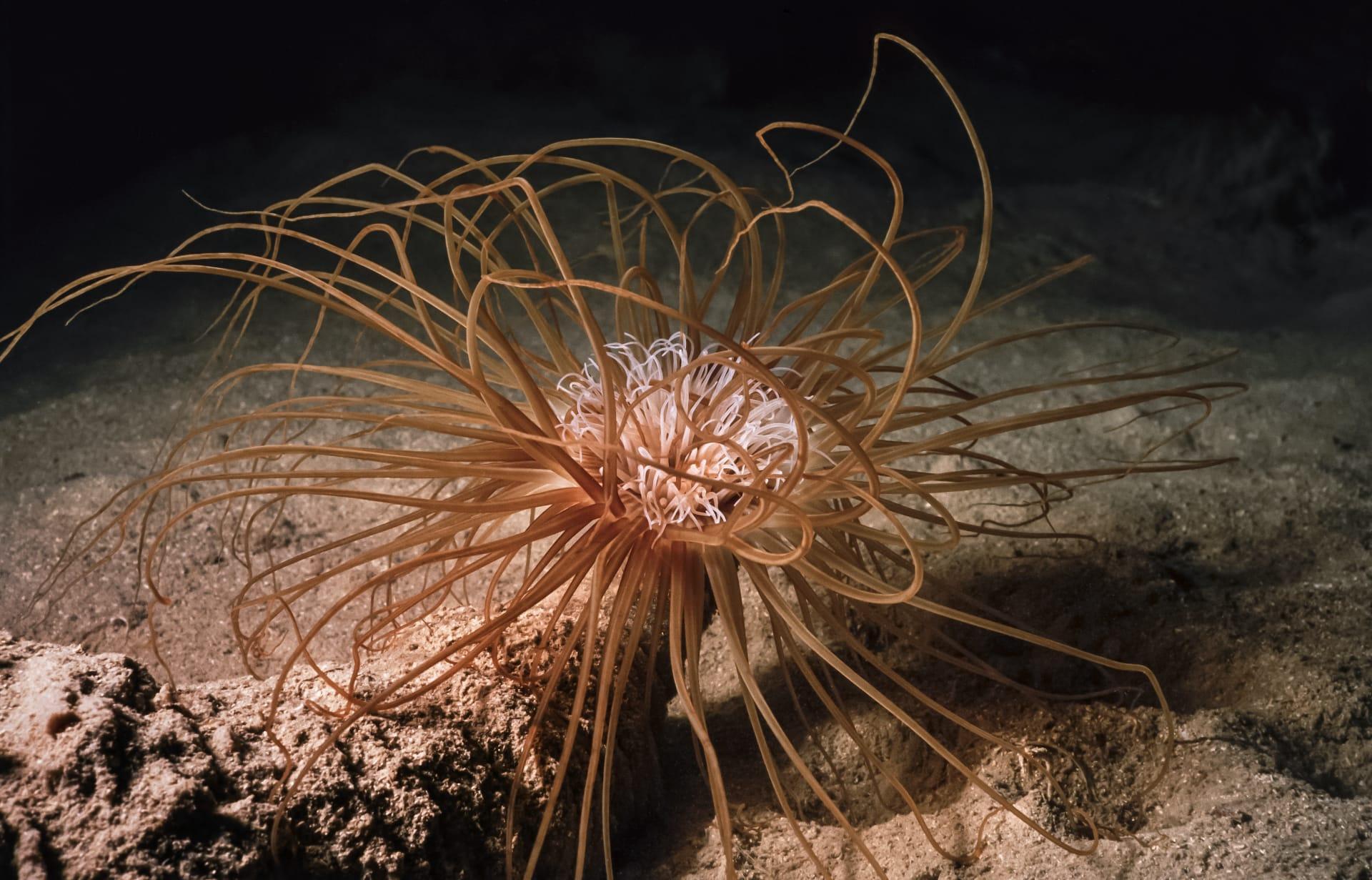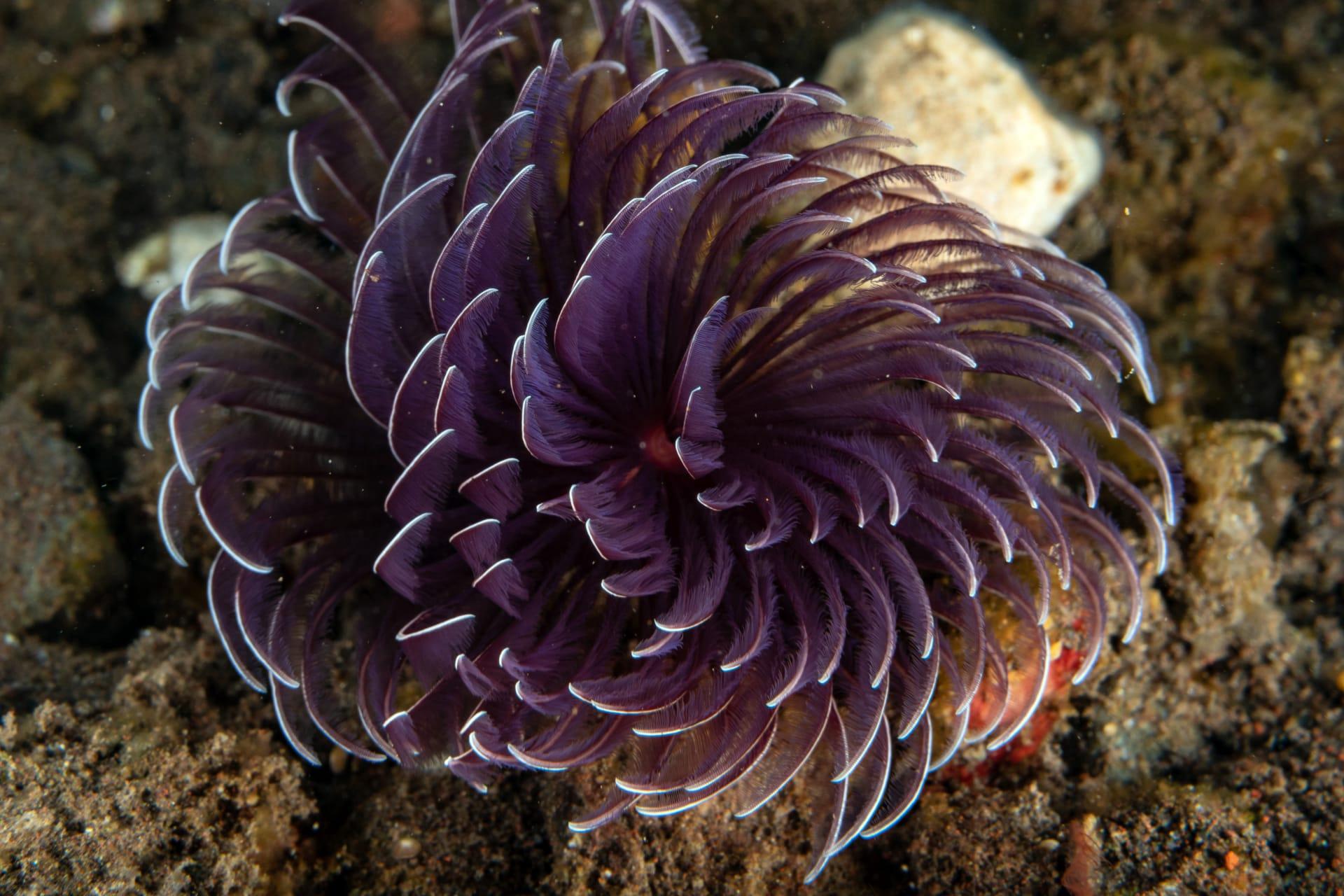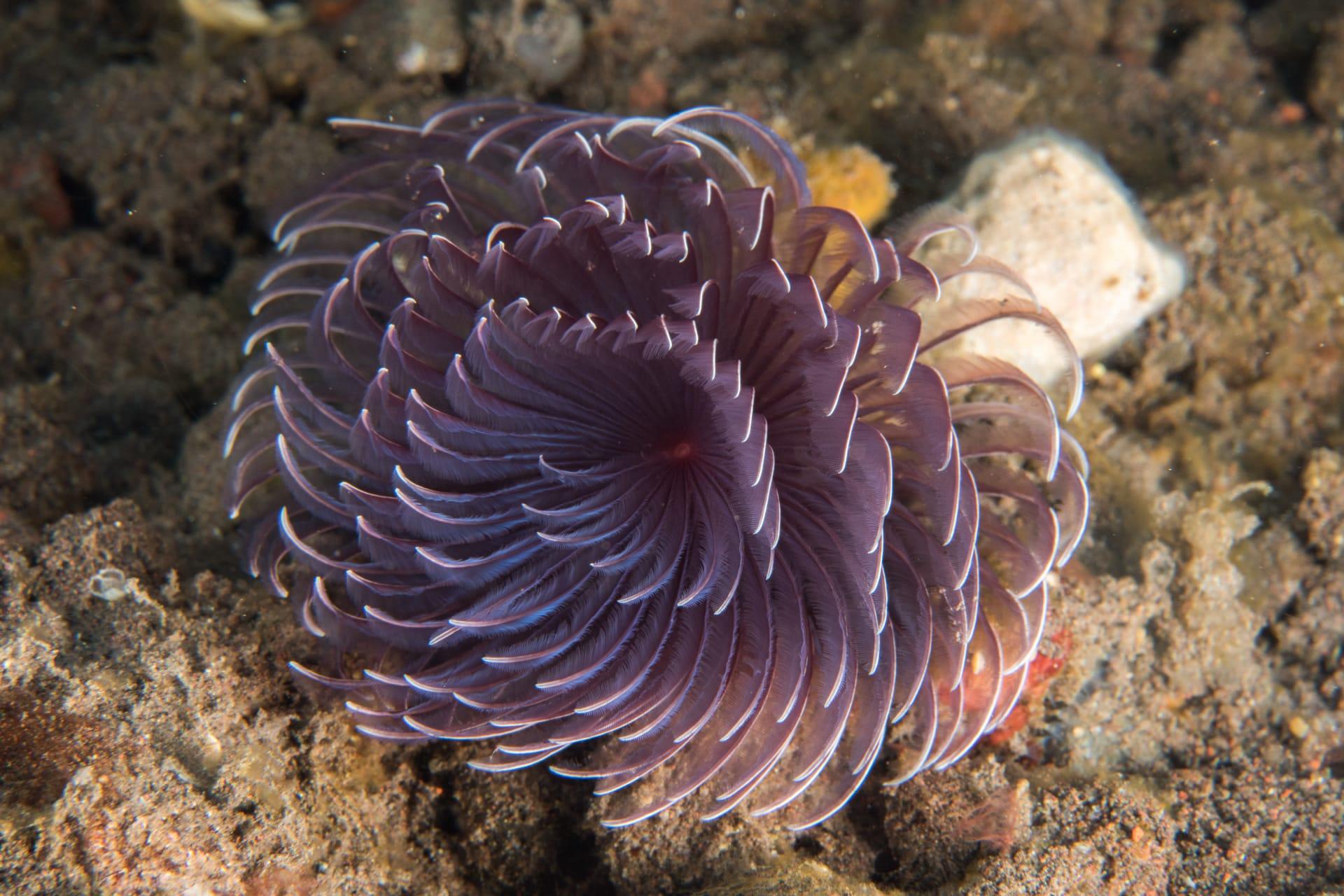Tube Anemone Characteristics
- Home /
- Mini Encyclopedia /
- Animal /
- Tube Anemone Characteristics
1
Tube anemones, or Ceriantharians, are a unique marine species. These creatures, often mistaken for plants, are actually predatory animals. With a typical length of about 30 centimeters, some species can grow up to 200 centimeters. Their bodies are cylindrical and elongated, resembling a tube, which serves as their dwelling. The lifespan of tube anemones can vary, with some living for up to several decades under optimal conditions. They display a stunning range of colors, from vivid blues and purples to more subtle browns and grays, adding a burst of color to the ocean floor.
The most distinctive organ of a tube anemone is its crown of tentacles. Arranged in two whorls, the inner circle has shorter tentacles, and the outer, longer ones. These tentacles are not just for show; they're equipped with cells called nematocysts, which are used for both defense and capturing prey. When a small fish or plankton comes too close, the nematocysts spring into action, releasing a toxin that paralyzes the prey, making it easy for the tube anemone to pull it into its mouth for a tasty meal.

2
Question: "Do tube anemones move, or are they stationary like other anemones?"
Answer: Unlike their cousins, the sea anemones, tube anemones can actually move, albeit slowly. They do this by contracting their body and pushing themselves along the ocean floor. However, they're not known for their mobility and spend most of their time stationary, buried in soft sediment with only their colorful tentacles exposed. This unique ability to move, albeit limited, differentiates them from many other anemone species which are mostly fixed to a single spot.

3
The movement of tube anemones is quite fascinating. They are not anchored to rocks or coral like many anemone species. Instead, they nestle in soft, muddy or sandy substrates of the ocean floor. When they decide to move, they do so by slowly contracting their muscular body, inching along the seabed. This movement is generally rare and usually occurs during the search for food or a more suitable habitat.
Tube anemones are predatory creatures, capturing small fish and plankton with their tentacles. They use the nematocysts in their tentacles to stun or paralyze their prey with toxins. Once immobilized, the prey is moved towards the anemone’s central mouth for consumption. This method of feeding is quite efficient, allowing them to catch a variety of small marine creatures that venture too close to their tentacles.

4
Tube anemones thrive in a variety of marine environments, but they are commonly found in warmer, tropical and subtropical waters. They prefer to settle in soft substrates like sand or mud at various depths, ranging from shallow waters to depths of over 100 meters. Their tube-like structure, buried in sediment, provides both a safe haven from predators and an ideal spot for ambushing prey.
Reproduction in tube anemones is quite interesting. They can reproduce both sexually and asexually. In sexual reproduction, they release sperm and eggs into the water, which then develop into larvae and settle to form new anemones. Asexually, they can reproduce by budding or fragmentation, where a part of the anemone breaks off and develops into a new individual. This dual mode of reproduction ensures their survival and proliferation in various ocean conditions.

5
Book: "Beneath the Waves: Exploring the Hidden World of the Ceriantharian" by Dr. Maria Gomez, published in the United States, 2010. This book offers an in-depth look at the life of tube anemones. Dr. Gomez, a marine biologist, shares her extensive research and underwater explorations, providing insights into the behavior, physiology, and ecology of these fascinating creatures. The book is filled with vivid photographs and detailed descriptions, making it an engaging read for both scientists and marine enthusiasts.
Book: "The Secret Life of Tube Anemones" by Professor Liam Taylor, published in the United Kingdom, 2015. Taylor’s book delves into the mysterious world of tube anemones, exploring their unique adaptations and survival strategies. He combines years of field research with a narrative style that brings the science of these sea creatures to life. The book covers topics from their feeding habits to their role in the marine ecosystem, making it a comprehensive resource for anyone interested in these extraordinary animals.